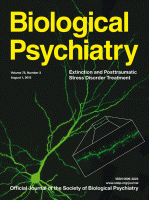
The article by Spielberg et al. in Volume 78, Issue 3 of Biological Psychiatry explores the large-scale topology of intrinsic functional networks in military veterans with posttraumatic stress disorder (PTSD) and mild traumatic brain injury (mTBI). The emerging approach, already applied to other neuropsychiatric disorders, begins to account for the reality that neural representations of symptoms are distributed across widespread, dynamically interacting brain regions and subnetworks, which are further modulated by affective and cognitive states. The large scale of the search space under exploration requires unbiased approaches to gain the greatest flexibility and the widest possible aperture. By contrast, much of the prior research using resting-state functional connectivity in PTSD, while making valuable contributions to the field, has focused on the functional neural connections to specific a priori anatomic regions or seeds. The large repertoire of spatiotemporal patterns of activity in the brain is the basis for adaptive behavior, and uncovering disruptions in these patterns will be essential for improving understanding of PTSD and mTBI. The work of Spielberg et al. covers new ground in PTSD by using an agnostic (whole-brain) approach to characterizing large-scale neural connectivity that will generate new hypotheses and spawn the discovery of the precise role that various circuits play in PTSD symptoms.
Citation: Morey, R. A., Lancaster, S. C., & Haswell, C. C. (2015). Trauma re-experiencing symptoms modulate topology of intrinsic functional networks. Biological psychiatry, 78(3), 156–158. https://doi.org/10.1016/j.biopsych.2015.06.001
